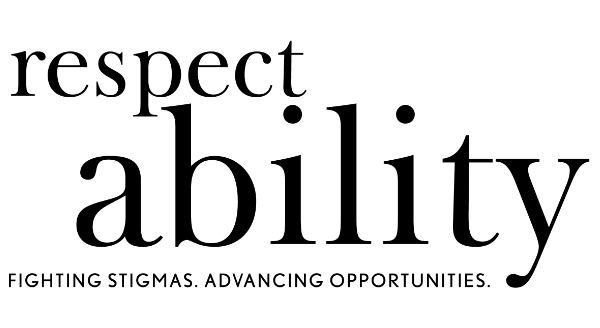Job Growth Slows for People with Disabilities
- Only 111,804 people with disabilities entered the workforce in 2017, down from the previous year’s increase of over 343,000 new jobs for people with disabilities.
- Florida experienced the biggest growth in job numbers with over 23,000 people with disabilities entering the workforce. Of the 50 states, 29 states saw job gains for Americans with disabilities.
- Vermont, under Gov. Phil Scott, becomes one of the top 10 states with the best employment rates, and Rhode Island, under Gov. Gina Raimondo, jumps from 47th in the nation to 19th.
Washington, D.C., Feb. 14 – New statistics released this week show that Americans with disabilities saw a slowdown in job gains compared to those of the previous year. The Disability Statistics Compendium, released by Institute on Disability at the University of New Hampshire, shows that the employment rate for people with disabilities has risen to 37 percent. The Compendium also shows that geography has an impact on employment outcomes for Americans with disabilities. People with disabilities in North Dakota are twice as likely to have jobs as West Virginians with disabilities.
The newly published 2018 Annual Disability Statistics Compendium compiles data collected by the Census Bureau. The Compendium is intended to equip policy-makers, self-advocates and others with clear statistics on disability in America today. Out of over 20 million working-age people with disabilities, 7.5 million have jobs. This data also shows the serious gaps that remain between disabled and non-disabled Americans. 37 percent of U.S. civilians with disabilities ages 18-64 living in the community had a job, compared to 77.2 percent for people without disabilities.
“Our nation was founded on the principle that anyone who works hard should be able to get ahead in life,” said Hon. Steve Bartlett, current Chairman of RespectAbility, who co-authored the Americans with Disabilities Act when he was in Congress. “People with disabilities deserve the opportunity to earn an income and achieve independence, just like anyone else.”
Further analysis by the nonpartisan advocacy group RespectAbility shows that 111,804 people with disabilities entered the workforce in 2017. That number is down from the previous year’s increase of over 343,000 new jobs for people with disabilities. Different factors explain the slower pace of job growth. A slowing economy is one factor, as is changing patterns of growth in different sectors of the economy. One lesson is clear to Andrew Houtenville, PhD of UNH’s Institute on Disability: “there is still a long way to go toward closing the gap between people with and without disabilities.”
“Employment rates only tell part of the story,” added Philip Kahn-Pauli, Policy and Practices Director at RespectAbility. “When you look across the intersection of disability and race, you find serious gaps in outcomes.” Only 28.6 percent of African Americans with disabilities have jobs compared to the 38.6 percent of Hispanics with disabilities and 41.2 percent of Asian Americans with disabilities who have jobs.
Some states have higher employment rates for people with disabilities than others. North Dakota leads the nation with 56.3 percent of its citizens with disabilities employed and is closely followed by South Dakota with a 51.3 percent disability employment rate. One of the biggest surprises in this year’s data is Vermont. Under Gov. Phil Scott, Vermonters with disabilities have seen a 5.7 percent increase in jobs, bumping their employment rate to 47.2 percent. For a full break down of the top 10 states, please see the table below:
| State Ranking | State | Total # of Working-Age PWDs | # of PWDs Employed | Total Job Gains and Losses | Disability Employment Rate |
| 1 | ND | 37,320 | 21,019 | -2267 | 56.3 |
| 2 | SD | 49,546 | 25,419 | -904 | 51.3 |
| 3 | UT | 150,964 | 74,754 | -13 | 49.5 |
| 4 | NE | 112,418 | 55,391 | 2068 | 49.3 |
| 5 | MN | 305,082 | 145,697 | 617 | 47.8 |
| 6 | VT | 47,113 | 22,234 | 1728 | 47.2 |
| 7 | KS | 191,769 | 89,069 | 4807 | 46.4 |
| 8 | MT | 69,553 | 31,935 | -1484 | 45.9 |
| 9 | IA | 170,186 | 77,746 | -2670 | 45.7 |
| 10 | WY | 41,825 | 19,063 | 578 | 45.6 |
Of the 50 states, 29 states saw job gains among the disability community, while people with disabilities lost economic ground in 21 states. Census Bureau data shows an astounding 23,953 Floridians with disabilities gained new jobs. Illinois saw the second biggest job gains for people with disabilities with over 20,000 new jobs even as 50,000 people without disabilities left Illinois’ workforce.
Rhode Island deserves credit for seeing a major turnaround. As reported by RespectAbility, Rhode Island under Gov. Gina Raimondo ranked 47th in the nation last year with an abysmal 30 percent disability employment rate. As a result of a settlement agreement with the Department of Justice, Rhode Island began to close shelter workshops where people with disabilities had been paid subminimum wages. Through sustained efforts to promote competitive, integrated employment Rhode Islanders with disabilities are now experiencing new success. Over 7,000 people with disabilities entered the workforce in 2017, pushing Rhode Island to stand 19th in the nation. As bipartisan consensus grows around ending subminimum wages, Rhode Island shows that transformative success is possible.
What is the story behind the numbers? What is driving these changes? The answer is simple. According to Vincenzo Piscopo of the Coca-Cola Company: “People with disabilities bring a unique skill set that it is very valuable for companies.” He went on to add that “As it relates to employment and competitiveness in the workplace, we have to stop thinking of disability as a liability and start thinking of it as an asset.”
Brand name companies such as JP Morgan Chase, Coca-Cola, Ernst & Young, IBM, Walgreen’s, Starbucks, CVS and Microsoft show people with disabilities are successful employees. These companies also know that these workers improve the bottom line. “People with disabilities bring unique characteristics and talents to the workplace,” added RespectAbility President Jennifer Laszlo Mizrahi. “There are no limits to what they can do when given the chance.”
As more companies hire employees with disabilities, conversations are shifting to focus on inclusion. “Disability inclusion is no longer about automatic doors, curb cuts, ramps, and legislation,” says Jim Sinocchi, Head of the Office of Disability Inclusion at JP Morgan Chase. “Today, the new era of disability inclusion is about “assimilation”– hiring professionals with disabilities into the robust culture of the firm.”
According to the Census Bureau, there are more than 56 million Americans living with a disability. Disabilities include visible conditions such as spinal cord injuries, visual impairments or hearing loss and invisible disabilities such as learning disabilities, mental health or Autism.
Voter research, done by RespectAbility, shows how disability issues connect to all aspects of American life. “Fully three-quarters of likely voters either have a disability themselves or have a family member or a close friend with disabilities,” said former Representative and Dallas Mayor Steve Bartlett. “People with disabilities are a politically active, swing vote, and candidates should take note of important issues they care about.” As 2019 moves into 2020 and the political campaign season heats up, continuing job growth for people with disabilities will be a crucial indicator of the health of the American economy.
| All 50 States Ranked by Disability Employment Rates in 2017 | |||||
| State Ranking | State | Total # of Working-Age PWDs | # of Working-Age PWDs Employed | Disability Employment Rate | PWDs Job Gains and Losses |
| U.S. | 20,444,249 | 7,572,805 | 37 | 111,804 | |
| 1 | ND | 37,320 | 21,019 | 56.3 | -2267 |
| 2 | SD | 49,546 | 25,419 | 51.3 | -904 |
| 3 | UT | 150,964 | 74,754 | 49.5 | -13 |
| 4 | NE | 112,418 | 55,391 | 49.3 | 2068 |
| 5 | MN | 305,082 | 145,697 | 47.8 | 617 |
| 6 | VT | 47,113 | 22,234 | 47.2 | 1728 |
| 7 | KS | 191,769 | 89,069 | 46.4 | 4807 |
| 8 | MT | 69,553 | 31,935 | 45.9 | -1484 |
| 9 | IA | 170,186 | 77,746 | 45.7 | -2670 |
| 10 | WY | 41,825 | 19,063 | 45.6 | 578 |
| 11 | CO | 311,449 | 141,691 | 45.5 | 10033 |
| 12 | AK | 53,087 | 23,815 | 44.9 | -275 |
| 13 | ID | 125,743 | 54,948 | 43.7 | 4858 |
| 14 | HI | 59,469 | 25,546 | 43 | -810 |
| 15 | NH | 84,234 | 36,069 | 42.8 | -676 |
| 16 | MD | 335,461 | 141,870 | 42.3 | 4353 |
| 17 | WI | 339,267 | 142,285 | 41.9 | -1441 |
| 18 | VA | 500,771 | 204,103 | 40.8 | 10471 |
| 19 | RI | 75,806 | 30,787 | 40.6 | 7758 |
| 20 | WA | 480,828 | 194,948 | 40.5 | 1156 |
| 21 | CT | 189,419 | 76,096 | 40.2 | 1381 |
| 22 | NV | 183,918 | 73,968 | 40.2 | -9485 |
| 23 | TX | 1,622,962 | 647,977 | 39.9 | 3796 |
| 24 | IN | 477,660 | 184,343 | 38.6 | 8964 |
| 25 | IL | 691,453 | 263,464 | 38.1 | 20681 |
| 26 | OR | 288,493 | 109,027 | 37.8 | -9887 |
| 27 | MA | 396,597 | 149,633 | 37.7 | -1014 |
| 28 | NJ | 428,932 | 161,729 | 37.7 | 2154 |
| 29 | OK | 339,773 | 127,608 | 37.6 | 4040 |
| 30 | PA | 880,799 | 329,760 | 37.4 | 6406 |
| 31 | MO | 463,964 | 172,283 | 37.1 | 8040 |
| 32 | DE | 52,947 | 19,576 | 37 | -708 |
| 33 | OH | 840,199 | 309,665 | 36.9 | 4725 |
| 34 | AZ | 428,198 | 156,194 | 36.5 | 5,760 |
| 35 | CA | 1,980,677 | 721,536 | 36.4 | 19745 |
| 36 | ME | 112,442 | 39,424 | 35.1 | 3067 |
| 37 | GA | 661,498 | 227,895 | 34.5 | -8682 |
| 38 | NY | 1,099,574 | 378,951 | 34.5 | 11473 |
| 39 | FL | 1,258,361 | 428,638 | 34.1 | 23953 |
| 40 | LA | 361,642 | 122,683 | 33.9 | 2240 |
| 41 | MI | 727,451 | 246,196 | 33.8 | -8138 |
| 42 | NC | 689,612 | 232,875 | 33.8 | -16355 |
| 43 | NM | 169,264 | 57,005 | 33.7 | 7921 |
| 44 | TN | 538,061 | 179,049 | 33.3 | 4679 |
| 45 | SC | 376,889 | 122,789 | 32.6 | -6977 |
| 46 | AR | 285,023 | 87,920 | 30.8 | 2473 |
| 47 | KY | 430,265 | 129,954 | 30.2 | -3972 |
| 48 | MS | 265,344 | 73,203 | 27.6 | -2875 |
| 49 | AL | 418,429 | 112,030 | 26.8 | -3,769 |
| 50 | WV | 188,696 | 49,199 | 26.1 | -4173 |









I had a very bad car accident in 1990 . Only out of high school for a few years and always had worked as a laboer with agressive hrs I found myself on social securirty disability.very depressed always used to working
I found lo pay cashier type jobs until I got my emt and became a dispatcher.I was neverso happy. Too good to be true. The corporate america saw the money I was makkng and too it frim me i now am 58 broke dispatching same job after givibg up my ssd (bad move) i had to find a new job. So AMR agreed to hire me doing similar dispatch work as my job I cannot pay my bills but have a place to go to and stay warm
Hi: Thanks for your report on such an important subject. I live in NY. When I was first diagnosed and put on disability, it was for mental trauma, this was 2014. I continued working because I did not understand the whole process of the disability thing, and the lawyer did not explain it to me. One year after I had to stop working completely because I was diagnosed with a rare eye disease called “Cone-rod dystrophy.” This changed my status by law to legally blind. I have sent every piece of medical report to Disability and asked them to change my medical status to legally blind. They have not done so. It going on 6 years. I have done appeals, and got no replies. I have had a lawyer file for an appeal last year and still nothing. They are taking out $100 monthly from what the little I am making on Disability and is preventing me from working enough hours to care for myself. This is unfair but I do know what to do. Maybe you can print this and somebody might have some advice.